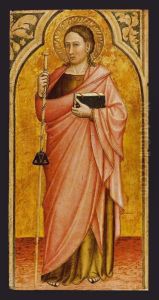Andrea Di Nerio Paintings
Andrea di Nerio, also known as Andrea di Nerio Tosini, was an Italian painter active during the late 14th and early 15th centuries in Florence. His exact birth and death dates are not well documented, but his artistic activity is generally placed between 1390 and 1414, suggesting a birthdate around 1370 and a death date around 1414.
Andrea di Nerio's work is associated with the late Gothic style, characterized by elegant and elongated figures and an emphasis on decorative details. He was influenced by the work of Agnolo Gaddi and the traditions of the Florentine school, which was transitioning from medieval to Renaissance styles during his lifetime.
While not as well-known as some of his contemporaries, Andrea di Nerio contributed to the artistic landscape of Florence during a significant period of transformation. His paintings often featured religious subjects, typical of the time, and he was known for his use of vivid colors and his skill in creating narrative compositions.
Unfortunately, due to the scarcity of information, much of Andrea di Nerio's life and work remain shrouded in mystery. Few of his works have been attributed to him with certainty, but those that have been reveal an artist who was adept at synthesizing the prevailing styles of his era into his own distinct artistic voice.
Although Andrea di Nerio may not have achieved the fame of other Renaissance artists, his contributions to the development of Florentine painting are still recognized by art historians today. His surviving works provide valuable insights into the artistic and cultural shifts that were taking place in Italy at the dawn of the Renaissance.
